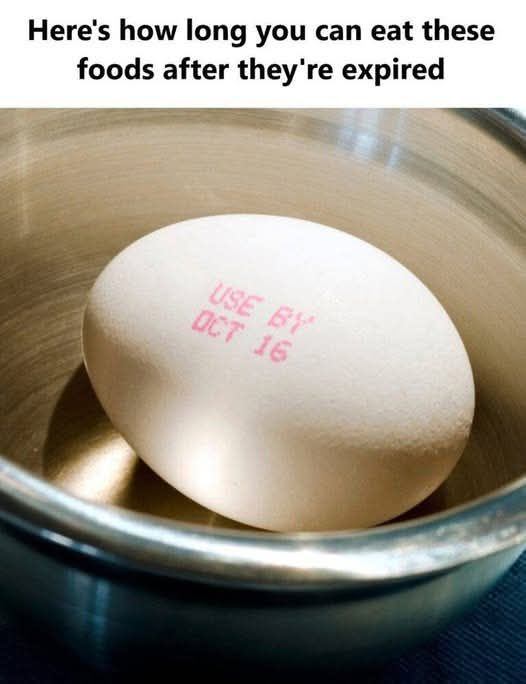ADVERTISEMENT
3. Rice
White rice, in particular, has an incredibly long shelf life, sometimes lasting up to 2 years or more after the expiry date. Brown rice, due to its higher oil content, doesn’t last as long, but it still remains good for months after the expiration date. As long as rice is stored in a cool, dry place and isn’t infested with bugs, it’s generally safe to eat.
Tip: Store rice in airtight containers to prevent moisture and pests from getting in.
4. Frozen Vegetables
Frozen vegetables are one of the most forgiving foods when it comes to expiration dates. They can typically remain good for several months or even a year after the date on the packaging. The key is to make sure the vegetables have been stored at a constant, low temperature without any freezer burn, which can affect taste and texture but not safety.
Tip: As long as the veggies look and smell fine, and the packaging is intact, they should be safe to consume.
5. Hard Cheese
Hard cheeses like Parmesan, Cheddar, and Gouda have a natural preservation quality due to their low moisture content. Even after the expiry date, these cheeses can often be eaten, as long as there’s no mold or sour smell. If you find mold, you can usually cut it off (cut at least an inch around the moldy area) and still safely eat the rest of the cheese.
Tip: Keep cheese wrapped properly in wax paper or plastic to extend its shelf life and prevent mold growth.
6. Honey
Honey is famous for its virtually indefinite shelf life. Due to its natural antibacterial properties and low moisture content, honey does not spoil. While it may crystallize over time, it’s still perfectly safe to eat. Just heat it gently to return it to its liquid form if you prefer.
Tip: Store honey in a tightly sealed jar to prevent moisture from entering, which could lead to fermentation.
7. Flour
Flour can last months after the expiration date, especially if it’s stored in a cool, dry place. Whole wheat and other whole grain flours may spoil faster due to their higher oil content, but all types of flour are generally still safe to eat as long as they’re free from insects or an off smell. If flour smells sour or rancid, it’s best to discard it.
Tip: Store flour in airtight containers to protect it from moisture and pests.
8. Oats
Like pasta and rice, oats can last far beyond their expiration date when stored in a dry, cool environment. Uncooked oats tend to have a long shelf life, and while their flavor may degrade slightly over time, they are still safe to eat. Check for signs of moisture, mold, or insect infestations before consuming.
Tip: Store oats in an airtight container to prevent moisture from affecting their quality.
9. Peanut Butter
Peanut butter, particularly the commercially processed kind, is designed to last for a long time due to its high oil content and natural preservatives. Even after the expiration date, peanut butter can last for months without significant quality loss. Just check for any signs of oil separation, mold, or an off smell before use.
Tip: Stir the peanut butter to mix in any oil that separates on top and store it in a cool place.
10. Yogurt (Past “Best By” Date)
While yogurt may have a “best by” date, it can often be safe to eat up to 1-3 weeks after the printed date, as long as it’s been refrigerated properly. The live cultures in yogurt act as preservatives, and the yogurt’s texture or taste might slightly change over time. If there’s no mold or sour smell, it’s likely fine to consume.
Tip: Always check the yogurt for signs of mold and give it a sniff test. If it smells sour (and it’s not the normal tangy smell of yogurt), it’s best to toss it.
How to Safely Consume Expired Foods
While many foods can last beyond their expiration dates, it’s important to always use your senses to assess them before eating. Here are a few things to check:
- Smell: If the food smells off or sour, it’s best to discard it.
- Appearance: Mold, discoloration, or any strange textures are red flags.
- Taste: If the food passes the smell and appearance test but still seems off when you taste it, it’s best not to eat it.
Conclusion
Expiration dates are a guideline, not a hard-and-fast rule. Many foods can still be safe to eat after their expiration date if they’ve been stored correctly and show no signs of spoilage. By understanding the shelf life of various foods and using your senses to evaluate them, you can minimize waste and enjoy foods that still have quality left. Just remember, when in doubt, it’s better to be safe than sorry.
ADVERTISEMENT
ADVERTISEMENT
